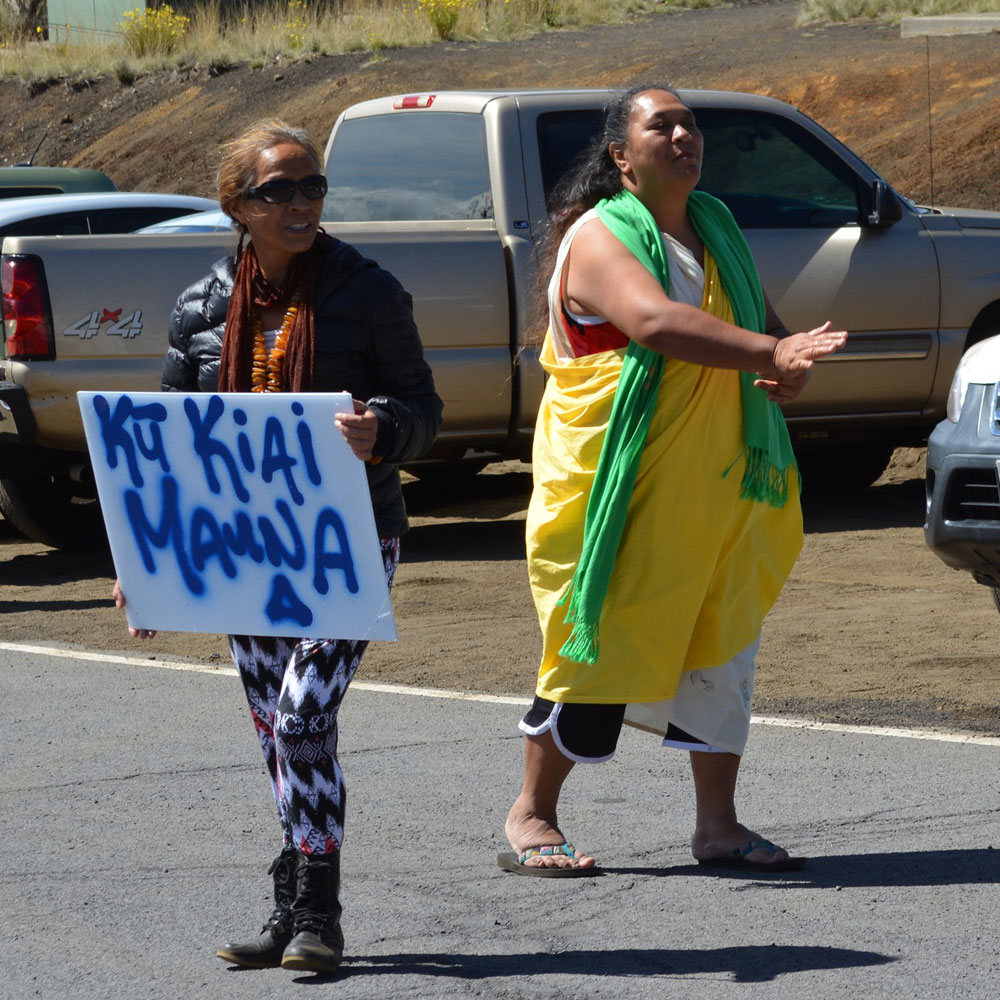
July 24, 2019; Vox
As hundreds of thousands of people poured into the streets of Puerto Rico, calling for an end to colonial government, a related fight began playing out nearly six thousand miles away. Native Hawaiians have blocked access to Maunakea, a sacred mountain on the big island. A university consortium company wishes to build the Thirty Meter Telescope (TMT) on the mountain, but Hawaiians and environmental groups both oppose the project.
For the native Hawaiians, or Kanaka ‘Oiwi, this fight is about much more than a telescope. It’s about who gets to decide how land is used, whose aspirations and systems are privileged, and ultimately, for recognition and sovereignty for indigenous people. Kaho’okahi Kanuha, one of the protestors, told CNN, “We are fighting to protect it because we know if we cannot stop this, there is not very much we can fight for or protect….This is our last stand.”
An NPQ article has neither the space nor the mandate to review the history of Hawaii’s occupation and struggles, but in extreme brevity: Hawaii was an independent kingdom, but in the late 19th century, white residents trying to develop a massive sugar industry on the islands began trying to take control. These would-be profiteers trumped up safety concerns, and the US government sent troops to the island for “protection,” forcing Queen Liliuokalani to cede control in 1893. Like other indigenous peoples, Hawaiians faced efforts to erase their culture and language, but starting in the 1970s, anticolonial activism and language revival efforts began to spread. NPQ has covered the struggle for Hawaii’s native language to hold equal place with English, the language of its occupiers.
Maunakea isn’t just a mountain; it’s not even just any sacred mountain. It’s the place where the earth meets the sky in Hawaiian cosmology, the site of the creation story. Environmental lawyer and consultant Trisha Kehaulani Watson-Sproat compared Maunakea to the Garden of Eden in the Abrahamic faiths.
Like Indian reservations on the US mainland, Maunakea is held in trust. A management plan published by the state explained, “The summit of Mauna Kea is, above all, ceded land, land that is held in the public trust, and land that is in a conservation district. These designations supersede its status as a site for astronomy, a science reserve, and a recreation area.”
Except they don’t, in practical terms. Over a dozen observatories have already been built on Maunakea, and historically, their management has harmed both the physical and the cultural environment. The University of Hawaii has already faced four audits for their mismanagement of Maunakea. Hawaiian ecosystems are extremely fragile and have been devastated by human destruction and invasive species.
Now a consortium of several universities wants to build the Thirty Meter Telescope on the island. It would be the biggest structure yet.
Sign up for our free newsletters
Subscribe to NPQ's newsletters to have our top stories delivered directly to your inbox.
By signing up, you agree to our privacy policy and terms of use, and to receive messages from NPQ and our partners.
This is where Native Hawaiian protectors, known as kia’i, including many elders, or kupuna, drew the line. Starting in mid-July, protestors blocked the road by chaining themselves to cattle guards. They prevented researchers, builders, and the National Guard from going up the mountain. The number of people more than tripled in a few days, to over 2,000. (Anita Hofschneider at Honolulu Civil Beat quoted scientists from other sites on the mountain bemoaning their inability to get to work, “throwing off dozens of scientific projects with global implications.”)
Like the protests in Puerto Rico, the blockade at Maunakea is being led by musicians and Kumu Hula, or cultural practitioners and Hawaiian dance masters. They have organized food provision, safety patrols, waste management, and other needs. In their role as cultural stewards, leaders have required camp occupants to hold themselves in “kapu aloha,” a spiritual edict of restraint and compassion.
Yet the police arrested a group of elders last week, including Mililani Trask, whose family is famous for activism on the island, and an 85-year-old retired nurse who was arrested in her wheelchair. Several people wondered whether people in governmental office in Hawaii, who are mostly white, deliberately ordered native officers to arrest the elders, sowing division in the community.
Governor David Ige declared a state of emergency on July 17th, citing concerns about “the safety and security of our communities and the TMT construction teams.” This couldn’t help but remind some people of the pretexts used to annex Hawaii in the first place.
Unlike many land protests by indigenous groups, such as Standing Rock and other anti-pipeline efforts, this one doesn’t split neatly into two “sides.” It’s not about economic growth versus land protection, or about disrupting an economic system. Protestors have emphasized that they’re not anti-science, or even anti-telescope. They just want a science that respects their rights and heritage as much as it does other factors. All the systems and structures by which their input was invited originated with the colonial government, the university, and other bodies that have historically oppressed the native population. Keolu Fox and Chanda Prescon-Weinstein, assistant professors of Biological Anthropology and Physics & Astronomy, respectively, wrote, “It is a clash between colonial science—the one which, under the guise of progress, has all too often helped justify conquest and human rights violations—and a science that respects indigenous autonomy.”
There are good arguments on the other “side”: Maunakea has been described as the “best site in the northern hemisphere” for astronomical observation. TMT has agreed to provide $1 million/year to a “Community Benefits Package” for Hawaii residents. It’s supposed to return land to the state and be a zero-waste facility. Undergraduate astronomy researcher James Bredall wrote an unusually long Twitter thread, based on the findings of a 2017 court case, explaining what TMT promises to do. It’s true that the telescopes already on Maunakea have done extraordinary things; one of them helped produce the first-ever photograph of a black hole just a few months ago. No one wants to be cast as fighting this kind of remarkable discovery—including the protestors, who pointed out that another viable site for the TMT has been offered in Spain.
But like the language case last year, it’s a question of recognizing and valuing the sovereignty of indigenous people, people of color, and colonized peoples. The continuation of colonial violence is too high a price to pay. The protestors on Maunakea are still there, and say they will remain.—Erin Rubin












